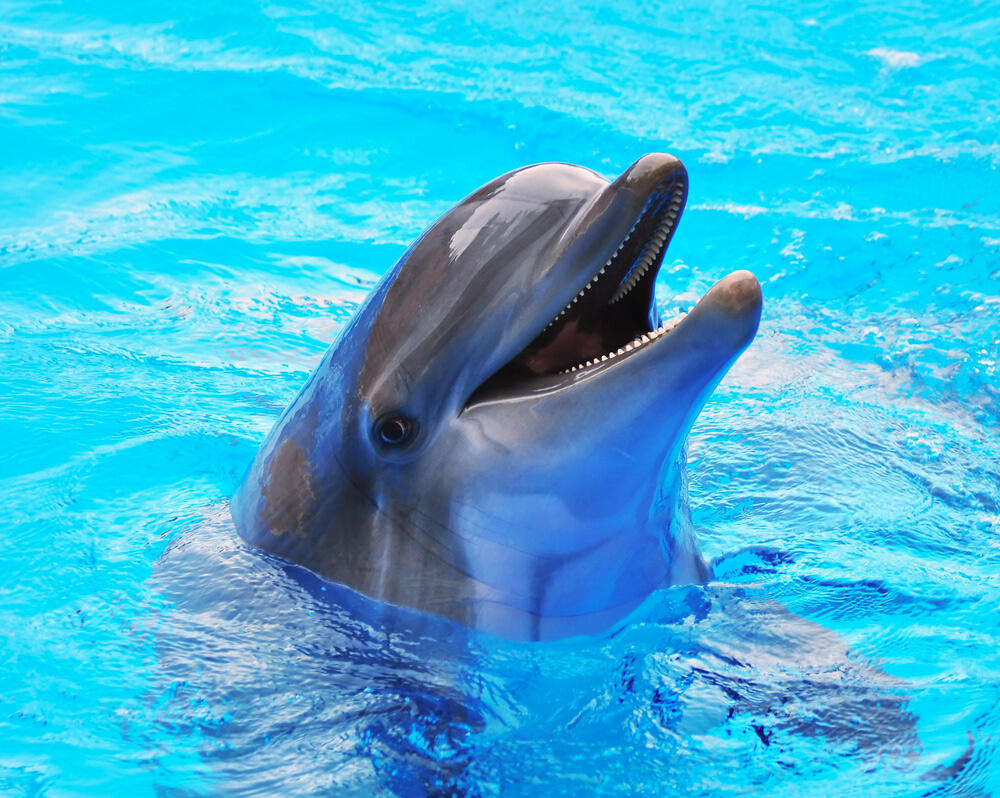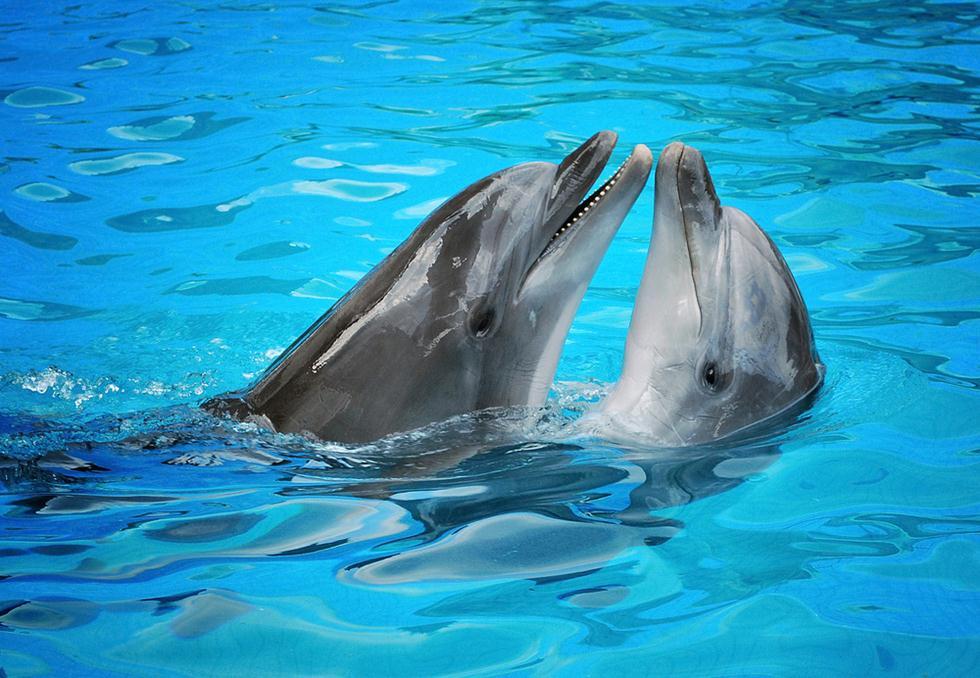Getting your Trinity Audio player ready...
In a recent study published in the journal iScience by Cell Press, researchers have revealed that captive bottlenose dolphins use "open mouth" expressions during play, resembling smiles in humans.
Scientists, coordinated by researchers from the University of Pisa, observed 22 captive bottlenose dolphins at Zoomarine Zoo in Rome and Planète Sauvage in France while playing in pairs, with trainers, and alone, to investigate their playful nature. The team recorded nearly 900 play sessions and noted about 1,300 instances of the "smile" expression.
"We've uncovered the presence of a distinct facial display, the open mouth, in bottlenose dolphins," said Elisabetta Palagi from the University of Pisa, which resembles human laughter during play and reflects playful communication.
The study found that dolphins displayed the "open mouth" expression primarily during interactions with other dolphins and not when interacting with humans or playing alone. Almost all the 'smiles' were recorded when the dolphins were playing among themselves instead of with their human trainers, reflecting their extreme playfulness and social nature.
The researchers observed that the open-mouth expression occurred more frequently when the sender was in the recipient's line of sight, indicating that the animals are aware of their play partner's attention state. Of all the open mouths tallied in the footage, nearly 90 percent were used when the dolphin's face could be seen by their playmate. When the "smile" was perceived, the playmate smiled back 33% of the time, demonstrating mutual acknowledgment and social responsiveness during play.
"This rate of mimicry in dolphins is consistent with what's been observed in certain carnivores, such as meerkats and sun bears," said Palagi. The study suggests that dolphins, like humans, use these smiles to bond with others and show that they're being friendly. "The relaxed open mouth, seen in social carnivores, monkeys' play faces, and even human laughter, is a universal sign of playfulness, helping animals - and us - signal fun and avoid conflict."
While the findings highlight the crucial role of visual communication in dolphin interactions, some researchers caution against overinterpreting the open-mouth gesture as a smile. "I don't think we should call it a smile just yet," said Heather Hill, a dolphin behavior expert, reflecting its complexity in communication and suggesting it may mean more than just playfulness.
Similarly, Luciana Moller at Flinders University in Adelaide, Australia, expressed that open-mouthed behavior in dolphins is a versatile signal and cannot necessarily be interpreted as a smile.
Elisabetta Palagi acknowledges that the study does not conclusively equate dolphin smiling with human smiling. "This rate of mimicry cannot merely be due to chance," she stated, emphasizing the significance of the findings in understanding dolphin social interactions. The researchers hope to study this behavior more in the future to understand if dolphins' smiles are used to show their feelings or if it's simply a way to communicate that they're playing.
Moreover, the study opens the door to future research on the role of vocalizations and tactile signals in dolphin interactions, as researchers propose incorporating these elements in understanding dolphin communication. "Play behavior is crucial if we want to study short-distance communication. Animals don't rely solely on visual signals; they also integrate these with other sensory modalities," noted Palagi.
The findings suggest that visual communication has played a crucial role in shaping complex social interactions, not only in dolphins but in many species over time. "The same has been found in primates—great apes and monkeys—but also social carnivores such as hyenas, meerkats, dogs," highlighting the similarity in social behaviors across species.
While the research provides valuable insights into dolphin behavior, it was conducted among captive dolphins, so it's hard to say how the species might use open mouths in the wild. "The next step would be to apply the same methodology, work with those wild species, and observe and see what they are doing in the same type of context," said Heather Hill.
This article was written in collaboration with Generative AI news company Alchemiq
Sources: infobae, Spiegel Online, BioBioChile, Science Times, LaRepublica.pe, CNN Español, BBC, ScienceAlert, Popular Science, New Scientist, EL PAÍS, The Independent, La Razón, France 24, LaVanguardia, O Globo, Süddeutsche Zeitung, ZEIT ONLINE, ScienceDaily, DIE WELT
Get the Ynetnews app on your smartphone:




